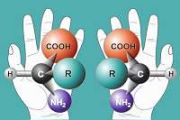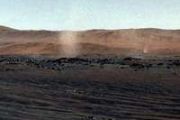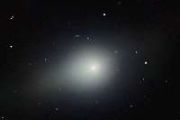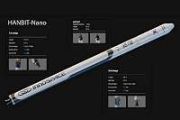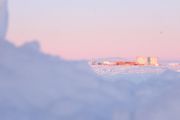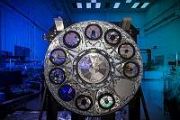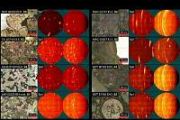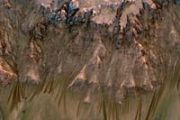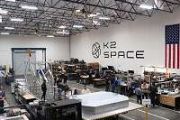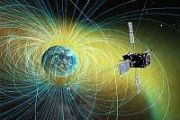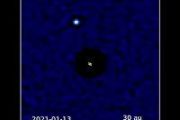
Copernical Team
Stratospheric success for BAE Systems' PHASA-35 UAV drone
 In a groundbreaking development, British engineers have successfully piloted the High Altitude Pseudo Satellite (HAPS) Uncrewed Aerial System (UAS) - PHASA-35 - to complete its first stratospheric flight. BAE Systems, a global leader in defence, aerospace, and security, conducted the trial last month in New Mexico, USA.
During the trial, PHASA-35 ascended over 66,000 feet into the stratosp
In a groundbreaking development, British engineers have successfully piloted the High Altitude Pseudo Satellite (HAPS) Uncrewed Aerial System (UAS) - PHASA-35 - to complete its first stratospheric flight. BAE Systems, a global leader in defence, aerospace, and security, conducted the trial last month in New Mexico, USA.
During the trial, PHASA-35 ascended over 66,000 feet into the stratosp Future of Satellite Internet: OneWeb vs Starlink
 Satellite constellations may well be the future of the Internet because they can ensure fibre-free coverage even in the most remote corners of the world. So, it should come as no surprise that many companies are already working in this direction. Elon Musk's Starlink and UK-based OneWeb were one of the first companies to have grasped the potential of satellite Internet, and it's more than probab
Satellite constellations may well be the future of the Internet because they can ensure fibre-free coverage even in the most remote corners of the world. So, it should come as no surprise that many companies are already working in this direction. Elon Musk's Starlink and UK-based OneWeb were one of the first companies to have grasped the potential of satellite Internet, and it's more than probab Shenzhou XVI crew set to conduct their first EVA
 The Shenzhou 16 astronauts aboard China's Tiangong Sspace Station are set for their first-ever spacewalk, as confirmed by the China Manned Space Agency.
In a recent press statement issued on Wednesday, the agency affirmed that the Shenzhou XVI team, which includes Commander Major General Jing Haipeng, Colonel Zhu Yangzhu, a spaceflight engineer, and Professor Gui Haichao, the science paylo
The Shenzhou 16 astronauts aboard China's Tiangong Sspace Station are set for their first-ever spacewalk, as confirmed by the China Manned Space Agency.
In a recent press statement issued on Wednesday, the agency affirmed that the Shenzhou XVI team, which includes Commander Major General Jing Haipeng, Colonel Zhu Yangzhu, a spaceflight engineer, and Professor Gui Haichao, the science paylo Wind River VxWorks software chosen for Astroscale's Space Debris Solution ELSA-M
 Wind River, an industry leader in intelligent system software, has announced that its VxWorks software will be utilized in the command of the Astroscale ELSA-M Servicer spacecraft's On-Board Computer (OBC). This announcement reflects Wind River's ongoing commitment to supporting the unique challenges and complexities of space missions.
Astroscale, a company dedicated to developing innovati
Wind River, an industry leader in intelligent system software, has announced that its VxWorks software will be utilized in the command of the Astroscale ELSA-M Servicer spacecraft's On-Board Computer (OBC). This announcement reflects Wind River's ongoing commitment to supporting the unique challenges and complexities of space missions.
Astroscale, a company dedicated to developing innovati Boeing's Millennium Space Systems amplifies small satellite production
 Millennium Space Systems, a subsidiary of Boeing [NYSE: BA], marked an important milestone on July 18, 2023, as it celebrated the success of its Small Satellite Factory (SSF). Initially unveiled to the public in 2022, the SSF has risen to the challenge of satisfying an uptick in contracts for proliferated satellite constellations.
This rapid expansion of production capabilities reflects th
Millennium Space Systems, a subsidiary of Boeing [NYSE: BA], marked an important milestone on July 18, 2023, as it celebrated the success of its Small Satellite Factory (SSF). Initially unveiled to the public in 2022, the SSF has risen to the challenge of satisfying an uptick in contracts for proliferated satellite constellations.
This rapid expansion of production capabilities reflects th New study reveals Roman Telescope could find 400 Earth-mass rogue planets
 New research by scientists from NASA and Japan's Osaka University suggests that rogue planets - worlds that drift through space untethered to a star - far outnumber planets that orbit stars. The results imply that NASA's Nancy Grace Roman Space Telescope, set to launch by May 2027, could find a staggering 400 Earth-mass rogue worlds. Indeed, this new study has already identified one such candida
New research by scientists from NASA and Japan's Osaka University suggests that rogue planets - worlds that drift through space untethered to a star - far outnumber planets that orbit stars. The results imply that NASA's Nancy Grace Roman Space Telescope, set to launch by May 2027, could find a staggering 400 Earth-mass rogue worlds. Indeed, this new study has already identified one such candida Ancient river is helping Perseverance Mars Rover do its work
 The six-wheeled geologist is getting some assistance in its search for diverse rock samples that could be brought to Earth for deeper investigation.
NASA's Perseverance Mars rover sealed the tube containing its 20th rock core sample on June 23 (the 832nd Martian day, or sol, of the mission), and the mission's science team is excited about its potential.
That's because this sample was
The six-wheeled geologist is getting some assistance in its search for diverse rock samples that could be brought to Earth for deeper investigation.
NASA's Perseverance Mars rover sealed the tube containing its 20th rock core sample on June 23 (the 832nd Martian day, or sol, of the mission), and the mission's science team is excited about its potential.
That's because this sample was CHAPEA Mars Simulation program a test bed for food systems and crop cultivation
 The initial crew selected for NASA's Crew Health and Performance Exploration Analog (CHAPEA) mission 1, a ground-based Mars habitat simulation, is set to evaluate the efficacy of growing fresh produce in isolation. Commenced on June 25 at NASA's Johnson Space Center in Houston, the four-member crew will conduct a series of operations over a year's span, and won't have the facility of fresh food
The initial crew selected for NASA's Crew Health and Performance Exploration Analog (CHAPEA) mission 1, a ground-based Mars habitat simulation, is set to evaluate the efficacy of growing fresh produce in isolation. Commenced on June 25 at NASA's Johnson Space Center in Houston, the four-member crew will conduct a series of operations over a year's span, and won't have the facility of fresh food AROBS Engineering Takes Lead Role in Space Rider Project Software Verification and Validation
 The Romanian software services company, AROBS Engineering, part of AROBS Group, has been announced as the primary industrial partner and consortium leader for the software verification and validation of Europe's first reusable space transportation system, Space Rider. This project, funded by the European Space Agency (ESA), is expected to revolutionize access to low orbit.
Space Rider's ce
The Romanian software services company, AROBS Engineering, part of AROBS Group, has been announced as the primary industrial partner and consortium leader for the software verification and validation of Europe's first reusable space transportation system, Space Rider. This project, funded by the European Space Agency (ESA), is expected to revolutionize access to low orbit.
Space Rider's ce Has the standard cosmological model been brocken or just cracked
 A global consortium of astrophysicists spearheaded by teams from the Max Planck Institute for Astrophysics in Germany, Harvard University in the United States, and Durham University in the United Kingdom, have taken a bold stride towards understanding the cosmos. The team has recently simulated the formation of galaxies and cosmic structures across vast expanses of space.
A unique aspect o
A global consortium of astrophysicists spearheaded by teams from the Max Planck Institute for Astrophysics in Germany, Harvard University in the United States, and Durham University in the United Kingdom, have taken a bold stride towards understanding the cosmos. The team has recently simulated the formation of galaxies and cosmic structures across vast expanses of space.
A unique aspect o 


